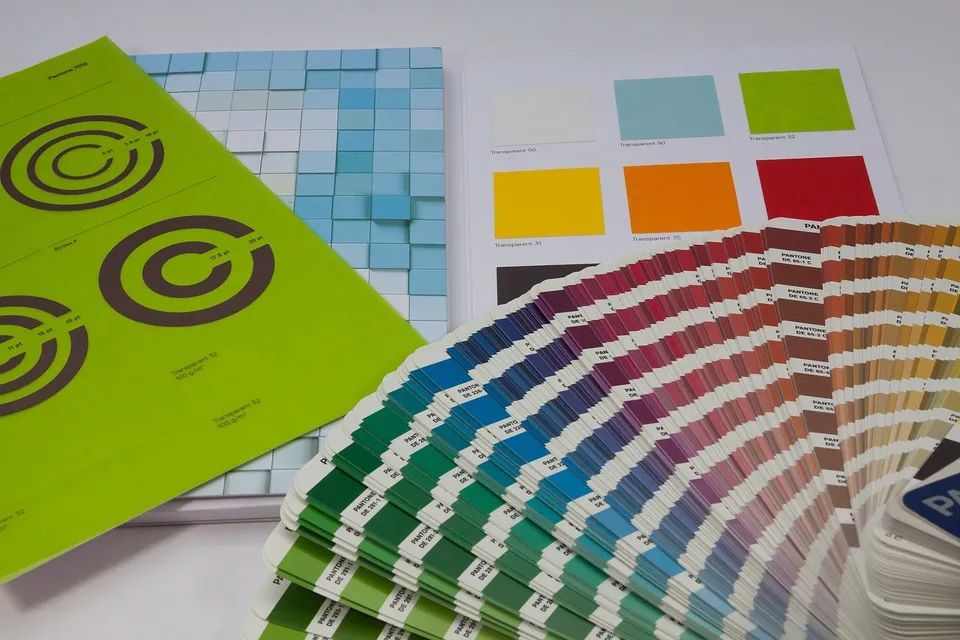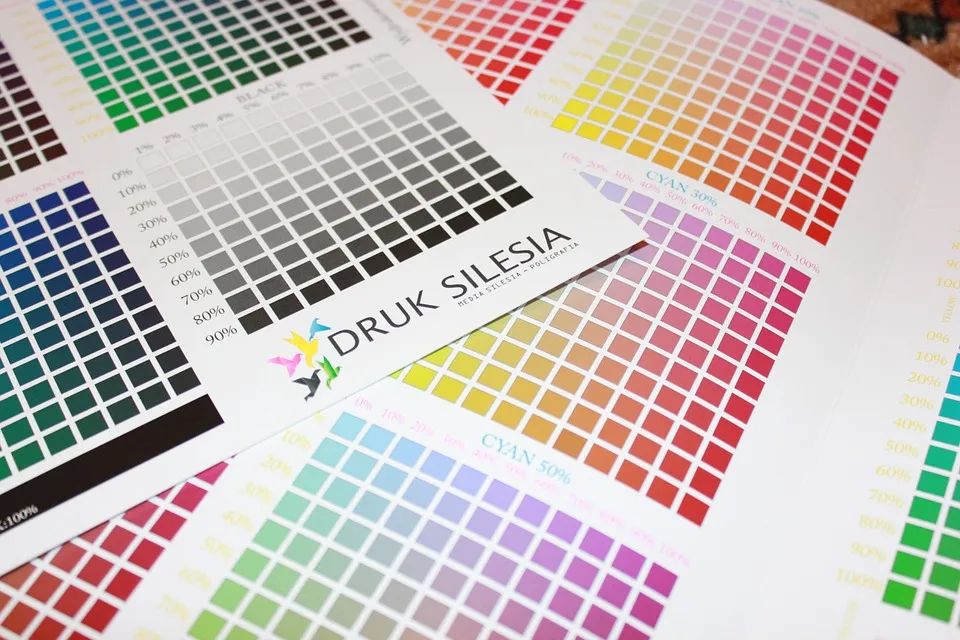Some requirements to pay attention to when printing samples!
Time:2023-08-14
Views:907
First, the strength of the light directly affects the judgment of the color of the printed proof, the strength of the light not only affects the brightness of the color, but also changes the appearance of the color.
Normally, we observe a illuminated cylinder, the side facing the light is bright, and the side backing the light is dark. The combination of light and dark is the middle tone.
The same object, under the standard light source is the normal color, if the light gradually becomes stronger, its hue will also change to a bright hue, the light is enhanced to a certain extent, any color can become white. The reflection point of black porcelain is also white, because the reflection point is concentrated and strongly reflected.
In the same way, the light gradually decreases, the various colors change to the low brightness hue, the light weakens to a certain extent, any color will become black, because the object does not reflect any light is black.
The viewing table of the printing workshop must meet the requirements, and the general requirement is that the illumination reaches about 100lx in order to correctly identify the color.
Second, there are differences between color light and daylight. In production practice, most of them work under the irradiation of the power supply, and each light source has a certain color.
This brings certain difficulties to the correct judgment of the original manuscript or product color, color viewing under the color light, color changes are generally the same color becomes lighter, complementary colors become darker.
In the printing workshop, the color temperature is generally higher (3500~4100k), and the color rendering coefficient is better than the fluorescent lamp as a sample light source, but it should be noted that the fluorescent lamp is slightly blue and purple.
Third, look at the sample and then look at the print first and look at the print and then look at the sample, the result will be slightly different, and the feeling is different when you look at a color twice.
This phenomenon is called sequential color contrast reaction.
Why does the sequential color contrast reaction occur? This is because the color that you look at first excites the color nerve fibers of the color, and then immediately look at other colors, and the other color nerves are quickly excited to cause color perception, and the color nerves that look at the color are in a state of inhibition after excitement, and then the excitement is slower, causing a negative color response.
This reaction is combined with the hue of the new look color to form a new color, so it changes the back look color. And the changed hue is still regular, is to look at the first color of the complementary color changes.
To understand the above three aspects of the problem and master their change laws, we should pay attention to the actual sample, so as to ensure the stability and improvement of the quality of printed products.
The printed matter is divided into monochrome printing and color printing. Monochrome printing is a type of printing limited to one color. Color printing can print full color pictures. Color printing mostly adopts color separation plate to reflect various colors, and the color separation plate is mostly composed of red (M), yellow (Y), blue (C) and black (K) four-color network plate.
According to the principle of color separation, the dot percentage of CMYK in the chromatography can be marked directly with text. When special colors are needed, special colors other than these four colors must be used to set the spot color plate. The color identification of the spot color plate can specify a certain hue in the spectrum for special debugging.

Printing color representation
Ink printing color, there are generally two methods:
1-The use of four-color ink printing color, mixing dots and overlapping printing.
2-Mixed printing ink, modulate the spot color, that is, the use of spot color printing, with solid color or dot performance color. The color designation and plate making methods of these two methods are different in print design.
01-Monochrome printing in grayscale
In monochrome printing, the deepest solid bottom is 100%; White is 0%, during which different shades of gray are made of different dots, that is, the use of percentage control. For ease of reading, anti-white lettering is usually applied on 50% to 100% of dark gray tones, and black lettering between 50% and 0%, but should also be considered as appropriate depending on the monochrome.
02-Four color annotations for color printing
Color printing is the use of red, yellow, blue, black four-color printing to produce ever-changing colors. It can use color separation plate printing color. However, the desired color of text or graphics in the design can use the color code to check the CMYK value of each color. However, some special colors such as gold, bank and fluorescent colors cannot be composed of four-color ink overprint, and must be printed with spot color ink.

Color plate changes
The needs of modern design are diverse and varied, and if you want to express a more perfect artistic conception, or a more special effect, only the color of some original images can not meet the required requirements. Therefore, the color plate process can be used to change or transform the order and number of color plates to achieve special color design requirements.
01-Black and white positive film to two colors
The use of two sets of color plates, the use of a monochromatic press to print twice, or a color-changing press to complete. Two-color printing is usually combined with a monochrome black plate, and then ingest another color as a color base. In the case of the original effect is not very good, this two-color printing method often produces unexpected results.
02-Color plate displacement printing
Color plate replacement printing is to change a certain color plate in the printing design, resulting in the change of color plate. The purpose is to pursue a special picture effect, which can often bring unexpected effects. Among the four versions of color separation, if two or three colors are exchanged for printing, the hue of the entire original surface will be changed, causing great changes.
Two-color printing is to separate two of the four plates, and only two plates are printed, that is, two-color printing. A third color can be produced, such as blue and yellow can be mixed to get green, as for the depth of green is completely dependent on the proportion of dots between blue and yellow. A normal tone produces a color picture, which is printed through one of two color plates to achieve a special color effect.
In the design, the occasional use of this printing method will produce a fresh feeling. Applied to the environment, atmosphere, time and season of the scene can play a special creative effect.
In order to seek a special tonal effect, one of the four color plates can be pulled away and the three color plate printing can be retained. In order to make the picture effect clear and prominent, the version with heavier color and darker tone is often used as the main color in the three colors.
It is also possible to print one of the three plates as a spot color, for example making a black plate silver or gold will produce a special color combination. Using the technique of color plate transformation, it is suitable for exaggeration, emphasis and special effect processing.
03-Monochrome printing
Monochrome printing refers to the use of one plate printing, which can be black plate printing, color plate printing, or spot color printing. Spot color printing refers to a special color required in a special modulation design as a primary color, which is completed by a plate printing.
Monochrome printing is more widely used, and will also produce rich tones to achieve satisfactory results. In monochrome printing, color paper can also be used as the base color, and the printed effect is similar to two-color printing, but it has a special charm. Special colors Special colors include gloss color printing and fluorescent color printing.
Gloss color printing is mainly printing gold or silver, to make spot color plates, generally using gold ink or silver ink printing, or with gold powder, silver powder and gloss oil, fast drying agent and other printing.
Under normal circumstances, it is best to print gold and silver, which is because gold ink or silver ink is printed directly on the surface of the paper, which will affect the gloss of gold and silver ink because of the degree of oil absorption on the paper. Generally speaking, a certain tone can be selected according to the design requirements. If you require a warm golden luster, you can choose a red version as the base color; Otherwise, you can choose blue; For both deep and shiny, you can choose a black bottom.
Fluorescent color printing refers to the use of spot color plate printing fluorescent color, the use of fluorescent ink printing, because the nature of the ink is different, the printed color is extremely bright. Used in design works, can produce a distinct and unique effect.














